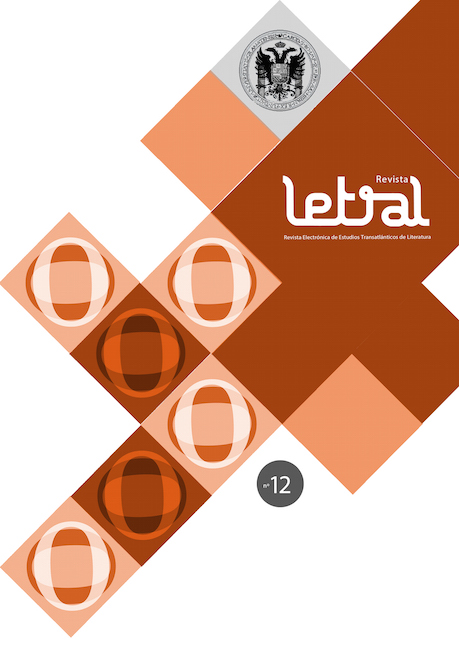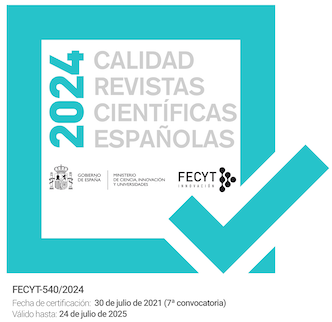¿Pero había que mataral mimo? Las trampas del humor explosivo en La virgen de los sicarios
DOI:
https://doi.org/10.30827/rl.v0i12.3873Keywords:
Fernando Vallejo, La virgen de los sicarios, humor, violencia, literatura colombiana, discursos de odioAbstract
Our Lady of the Assassins (1994), the most renown novel from the Colombian writer Fernando Vallejo, has been criticized because of the irresponsible laughter that it fosters in its public or the paralysis, melancholy and the feeling of helplessness that it produces trough the depiction of a country condemned to be a perpetual disaster. My reading opens a third way: to interpret the perplexity that Vallejo creates, with the juxtaposition of black humor and violence, as a (meta)humorous trap that encourages the reader to reflect on humor itself, in an aesthetic and ethical sense. In this trap, laughter does not come automatically or as a simple form of catharsis. It is obstructed, defamiliarized and questioned. I argue that the novel pushes the reader to take the decision on whether she or he laughs or not with certain humorous invitations, taking into consideration if they contribute to resist or exacerbate the violence that is represented. This would foster a kind of horizontal (re)education of humor, in which the text opens the question on the (im)propriety of laughter as a response to violence, but does not give an answer, since the agency to decide whether to laugh or not to laugh is in each reader. I explore a passage that critics usually do not consider, the murder of a street mime who is making fun of a defenseless old man. The episode allows me to show how the narrator gives some clues to imagine a kind of humor that is not another form of violence against others. A humor that, in the middle of the disaster, is able to bring some light by allowing us to have the greatness of laughing of our own ego and misfortunes. .Downloads
References
Bergson, Henri (2008). La risa. Ensayo sobre la significación de lo cómico.Madrid: Alianza.
Breton, André (1991). Antología del humor negro. Barcelona: Anagrama.
Bushnell, David (2012). Colombia, una nación a pesar de sí misma. Bogota:Planeta.
Collazos, Óscar (2012). “Vallejo, la virgen y los sicarios”, en El Tiempo.com, disponible en http://www.eltiempo.com/archivo/documento/MAM-1303543, consultado el 3 de febrero de 2014.
Critchley, Simon (2002). On Humour. New York: Routledge.Eco, Humberto (1984). “The frames of comic freedom”, en Carnival! Amsterdam:Mouton Publishers, 1-11.
Franco, Jean (2002) The decline and fall of the lettered city : Latin America in the Cold War. Cambridge, Mass.: Harvard University Press.
Freud, Sigmund (2002). El chiste y su relación con lo inconciente. Disponible en http://centrodedifusionyestudiospsicoanaliticos.files.wordpress.com/2013/03/volumen-viii-e28093-el-chiste-y-su-relacic3b3n-con-loinconsciente-1905.pdf, consultado el 15 de enero de 2014.
Freud, Sigmund (1960) “Mourning and melancholia”, en The standard Edition of the complete psycological works of Sigmund Freud. London:Hogarth.
Jaramillo, Alejandra (2006). Nación y melancolía, narrativas de la violencia en Colombia. Bogotá: Alcaldía Mayor de Bogotá, Instituto Distrital de Cultura y Turismo. Disponible en http://arbor.revistas.csic.es/index.php/arbor/article/viewFile/101/103, consultado en 3 mayo de 2012.
Jaramillo, Maria Mercedes (2000). “Fernando Vallejo desacralización y Memoria”, en Literatura y cultura :narrativa colombiana del siglo XX. v.2: 2000. Bogotá: Ministerio de cultura, 407-439.
Kant, Immanuel (2007). Crítica del juicio. Madrid: Espasa.
Morreall, John (1987). The Philosophy of Laughter and Humor. New York:SUNY.
Morreall, John (1989)”The Rejection of Humor in Western Thought”, en Philosophy East and West, Vol. 39, No. 3, Philosophy and Humor (Jul.,1989), : University of Hawai’i Press, 243- 265.
Salazar, Alonso (1990). No nacimos pa’ semilla. Medellín, Bogotá, Colombia: Corporación Región ; CINEP. Disponible en: http://es.scribd.com/doc/201267097/No-Nacimos-Pa-Semilla-Alonso-Salazar, consultado el 3 de agosto de 2012.
Salcedo Ramos, Alberto (2011). La eterna parranda. Crónicas 1997-2011.Bogotá: Aguilar.
Shklovsky, Victor (1965). “Art as Technique”, en Russian Formalist Criticism:Four Essays. Nebraska: University of Nebraska Press, 25-57.
Vallejo, Fernando (1994). La virgen de los sicarios. Bogotá, Colombia:Santillana.
Zelizer, Craig (2010). “Laughing our Way to Peace or War: Humour and Peacebuilding”, en Journaul of Conflictology, Volume 1, Issue 2 (2010) 1-9. Disponible en la página web http://journal-of-conflictology.uoc.edu, consultado el 2 de agosto de 2012.
Downloads
Published
How to Cite
Issue
Section
License
Revista Letral is an open access journal under a Creative Commons Atribución-NoComercial 4.0 license.
The works published in this journal may be reused, distributed and publicly presented for non-commercial purposes, provided that: cite the authorship and the original source of the publication (journal, publisher and URL of the work).
We strongly recommended you to share our published articles in social and scientific networks, institutional and public repositories, personal or institutional websites, blogs, Google Scholar, ORCID, ResearchID, ScopusID, etc.
The journal allow the author(s) to hold the copyright and to retain publishing rights without restrictions.
We are completely free, both for readers and authors.














